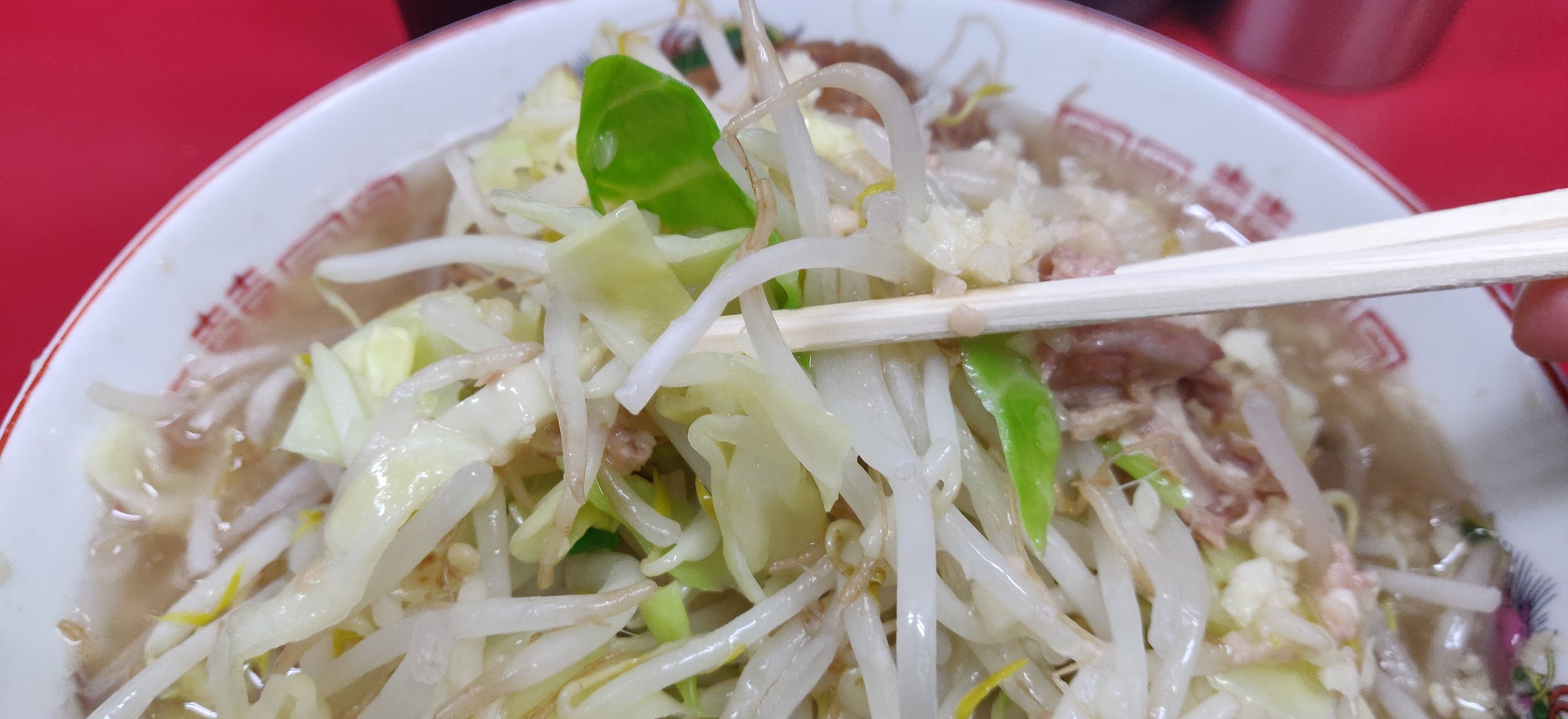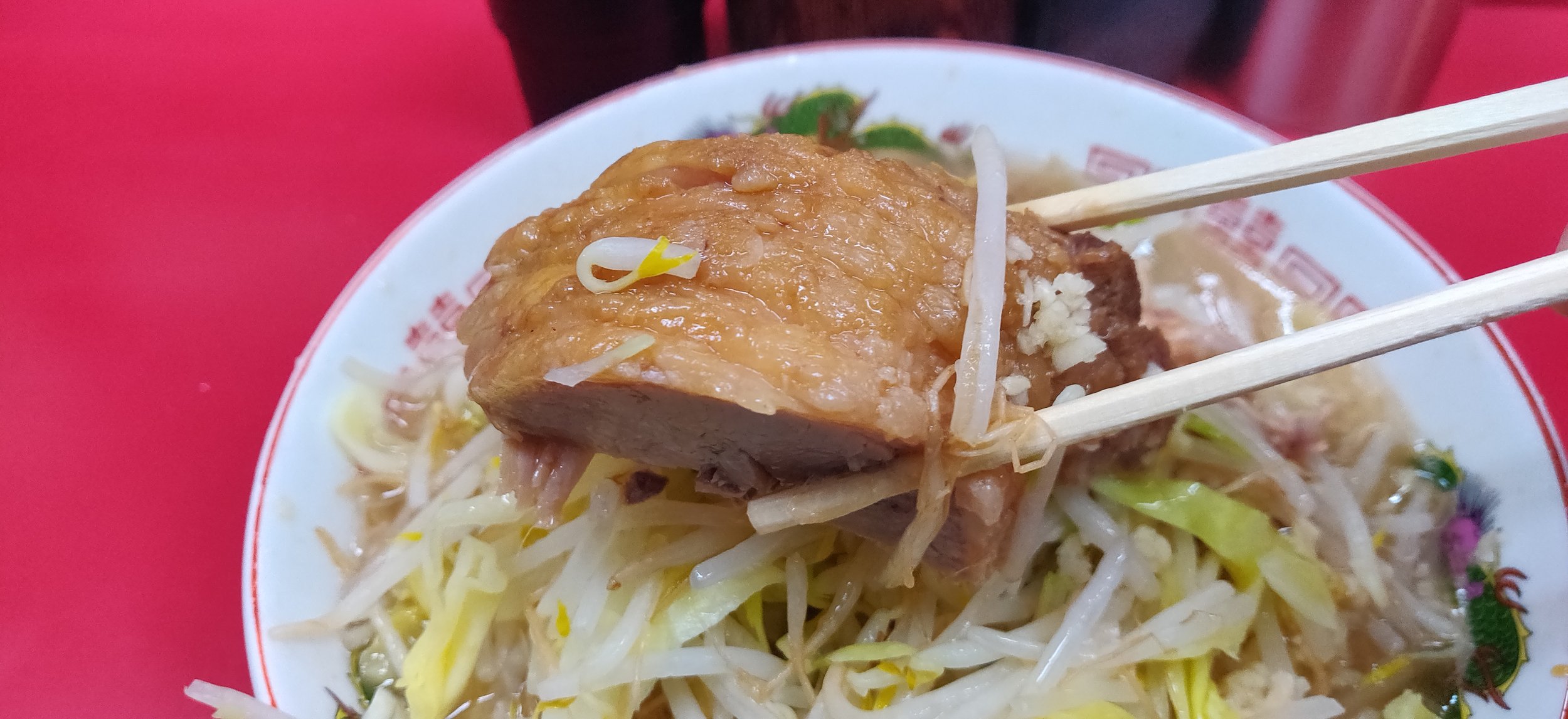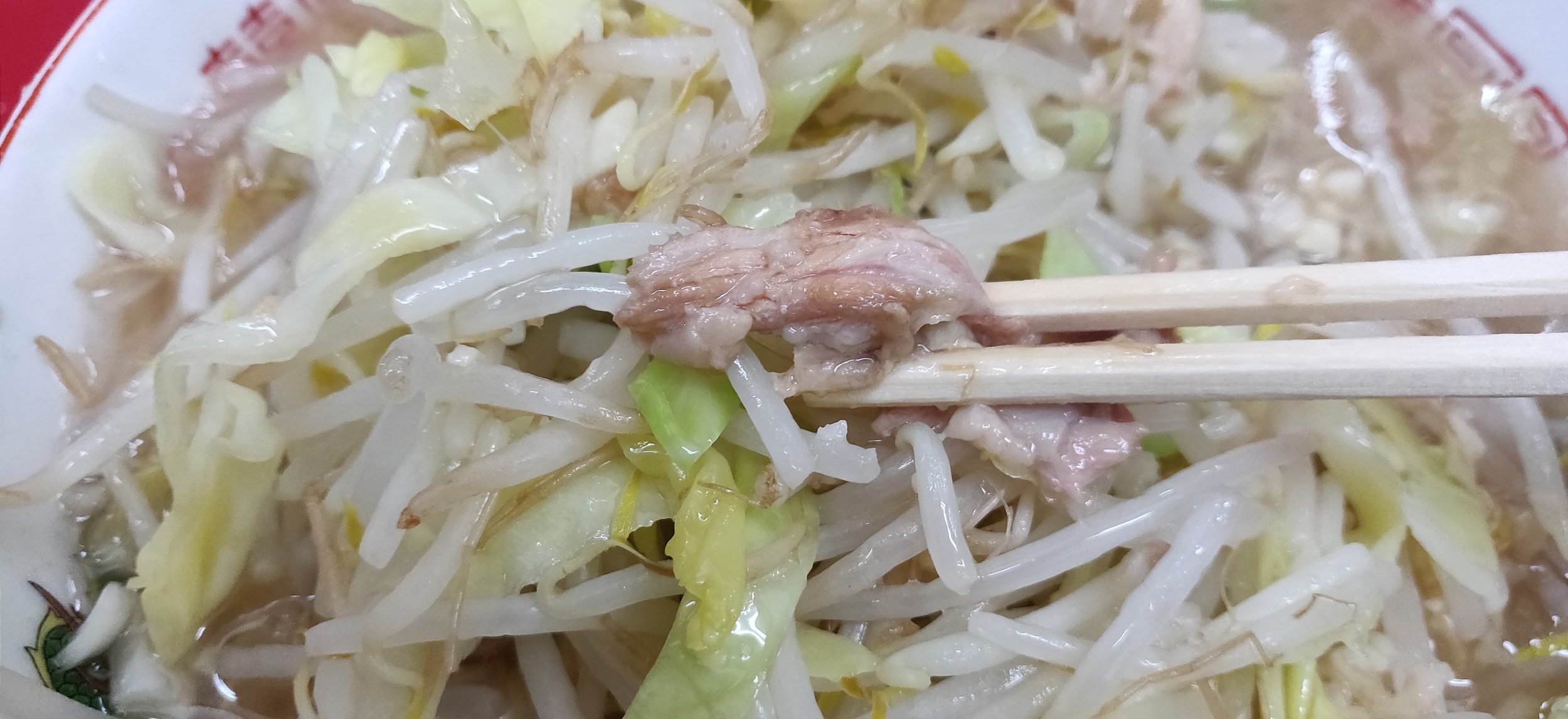Ramen Jiro Keikyu Kawasaki (ラーメン二郎京急川崎店): Old Man's Jiro; Kawasaki, Kanagawa
Back with another Jiro and this time I’m reviewing the Keikyu Kawasaki location which is named for the train station in which it is nearest, Kawasaki of the Keikyu line. I nicknamed it the Old Man’s Jiro because the master is an aging old man, but also because this place is a hot spot for the regulars who live near by and they all happen to be quite old in age. I would say the ramen caters to this demographic and is a lot more tame than the other locations, but nonetheless is still very popular with the Jirorians (Jiro fanatics) and commands long queues daily. Shop is open from Monday to Friday, 11:00-14:00 for lunch and 18:00-22:00 for dinner. Weekends the shop opens only for lunch on Saturday, but for an extended period from 11:00-16:00. While their banner says they open at 11:00, the master usually lets customers in at 11:20 so don’t be too shocked if you see the shutters closed if you arrive at 11. Also, they are known to close occasionally without notice so be prepared and have a second shop in mind if you plan on coming…just in case.
Menu is very simply as you’d expect from an old, no-nonsense master and serves just his Ramen in varying pork chashu amounts of normal, bit extra, and double chashu in Sho (small, top row) and Dai (large, bottom row) ramen portions. Due to the weird pricing, many tend to use a 1000 yen bill and get back their change in 100 and 10 yen coins thus creating a shortage of change so the master requests you use exact change when available. He even gives you an example of how to calculate how much to put in so you can get a 500 yen coin back in order to save the 10 and 100 yens.
My order for the day was the Sho Ramen in normal chashu serving. You’ll see in the photo later on, but the chashu slices are pretty massive so don’t over do yourself. The master hates when customers leave food behind so order with confidence that you’ll finish the noodles and toppings. If you’re new to Jiro, here’s a quick guide on how to order. When you reach the ticket machine, go ahead and make your order. Sometimes the master will ask you come in and buy a ticket while in line and have you show him the ticket so he knows how much noodles to prepare for your bowl. Once you sit down, place your ticket on the counter and wait until your ramen is ready. At every Ramen Jiro franchise location you are offered free toppings for your bowl. Once your bowl is ready he’ll ask you “Ninnikuwa?”, which is the signal for which toppings you want and how much of it. Yasai (vegetables consisting of blanched cabbage and bean sprouts), Ninniku (pressed garlic), Abura (pork fat), and Karame (seasoning sauce) are all free of charge. If you say each topping, you will get an average amount of those toppings. If you want a little extra of a certain topping, you can say “Mashi” after which ever topping you want more of. “Mashi-Mashi” will be even more of said topping. So for instance, if you wanted no garlic, extra vegetables, and normal pork fat and seasoning sauce, you would say “Yasai mashi, abura, karame”. If you want extra of all the toppings you can say “Zen-Mashi”, or everything extra. As for me, I ordered my usual of Ninniku, Abura Mashi which is extra garlic and pork back fat.
Soup here is about as basic as you can get it with it being the middle ground in terms of emulsification. It’s a tad thicker than the lower emulsification shops, but not quite as creamy as say a Hibarigaoka known for their richer soup. I can see how this is a favorite among the older clientele as it is very satisfying, but doesn’t weigh you down after a bowl. It doesn’t have a huge karame (shoyu tare) punch, but rather mellows out the rough edges of the pork bone broth and provides a gentler touch to the soup. I’m a glutton when it comes to Jiro so I like the extremes of super emulsified, creamy soup and the lower emulsified, oilier soup. The soup here just didn’t give me the satisfying feeling after a Jiro, but it would be great as a neighborhood ramen to have when you’re hungry… hence their popularity with regulars. You can see a nice layer of oil however which comes from the Abura, pork back fat, they have stewing in the stock pot with the pork bones. They ladle out the top bits of the stock for this oil and honestly, this was my favorite part as it helped give some body to this rather light soup.
With that said, I did really enjoy the noodles which are made in house. When I first started eating Jiro I was a regular at the Fuchu location which was a short walk from the house I grew up in. The Fuchu branch is known for some insane noodle thickness and has the curvy, reverse cut look that a lot of Jiro inspired shops strive for. Growing up I was a huge fan of those voluptuous noods, but I’ve since started to prefer these straight, flat cuts. They’re just easier to slurp and when I’m in a rush, or not wanting to hold up the line too much, I want to be in and out as soon as possible. These straight strands allow me to do just that and I feel it makes it a more pleasant dining experience. I do have a soft spot for those nostalgic Fuchu noods, but with other shops, I think I prefer this style. As for the aroma, I would have liked a bit more of the wheat flour and Kansui to come through, but can’t complain too much as it did pair nicely with this soup.
For toppings I was met with a great bean sprout/cabbage ration, very generous thick cut of pork chashu, and a melt in your mouth abura pork back fat which still had some bits of the meat hanging on. A lot of the hardcore Jiro heads consider this type of Abura to be undesired since its not in the purest, fattiest form, but I actually quite enjoy it and I think it pairs well with the blanched veggies underneath. I like to soak it in a bit of the soup together with the veggies and it makes for a sort of dressing for the flavorless bean sprouts and acts as another vessel for the soup to be consumed in. I do understand where the Jiro heads are coming from though as it does distract from the flavor of the fat, but to each their own. Speaking of the veggies, I have to say, quite impressed with the bean sprout to cabbage ration. You rarely see Jiro shops have so much cabbage in the mix due to how expensive cabbage is in comparison to bean sprout, but I like Kawasaki’s determination to serve the bowls as they did when they first opened. Thick cut chashu is another pleasant surprised and while not huge in diameter, more than makes up for in the thickness. Since it cooks in the stock, the pork chashu at Jiro shops can be overly tender, but with how thick the master here at Kawasaki cuts his, it more than holds up in the hot, pipping soup.
Really can’t go wrong with a bowl here. It might not be the best bowl of Jiro you’ll have, but it’s far from the worst and as a neighborhood shop, a very respectable location. If you’re a Jiro head or looking to try an assortment of locations, I definitely recommend checking out this Kawasaki branch, but I probably wouldn’t care out a time of my vacation if you’re just visiting Japan. If you do decide to make a visit, please be sure to let me know what you thought in the comments below or tag me on Instagram!







